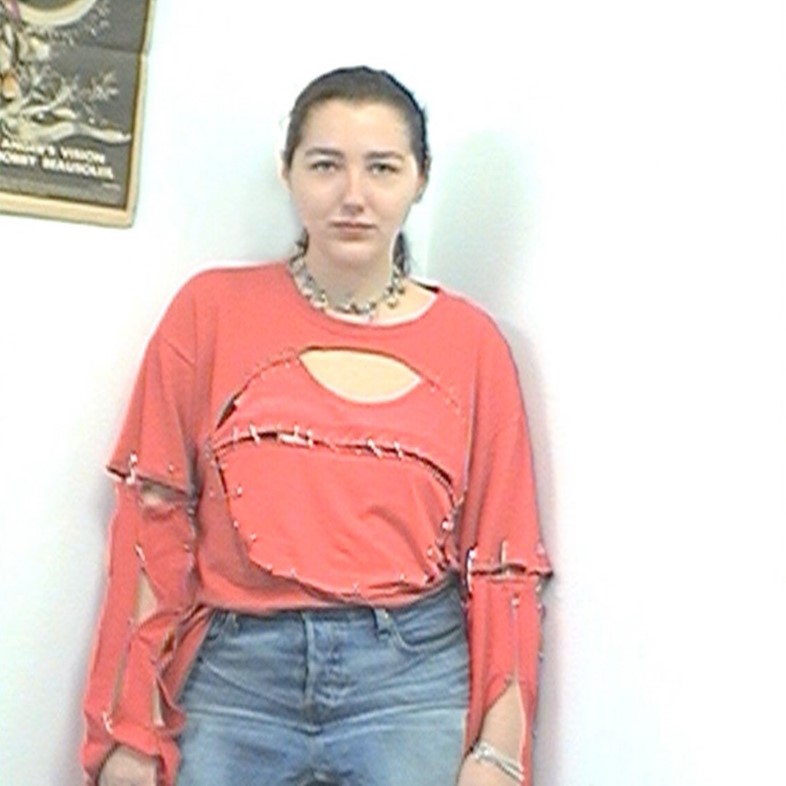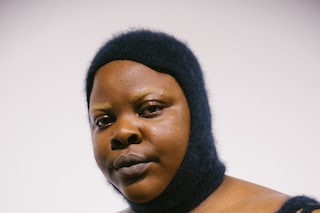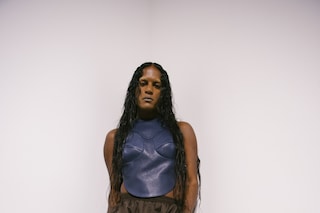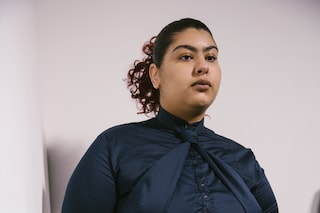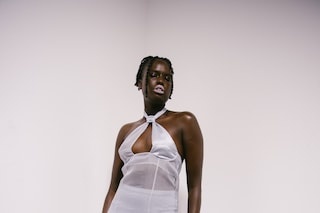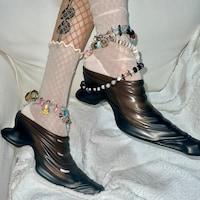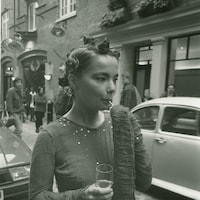With brands like Vivienne Westwood and Sinéad O’Dwyer on her client list, Emma Matell is the fashion powerhouse fighting for better representation on the runway
Emma Matell wasn’t even out of high school when she started her career as a casting director. Interning at a modelling agency in her hometown of Copenhagen, the wannabe 14-year-old photographer would pull her friends off the city’s streets and convince them to come in for test shoots.
So impressed by her naturally sharp eye was the modelling agency, that when she finally finished school, they brought her in as a scout. Working part-time as a florist on the side to make sure she could pay the bills, her focus was on growing their street casting boards at a time when “street casting wasn’t even really a thing”.
From the off, Matell was dedicated to discovering and championing the kind of people you’d never see on the runway: people of all races and ages, with bigger bodies, different abilities, beautifully weird faces, and who paid no attention to gender boundaries.
Though Copenhagen has a flourishing fashion scene of its own, soon its walls began closing in – Matell decided she wanted a bigger challenge, and so booked a one-way ticket to London. On landing in the city, she worked under the guidance of Madeleine Østlie at AAMØ for a few years, before going it alone last year. In late 2022, Emma Matell Casting was officially born.
Since then, she’s been tapped by massive houses like Vivienne Westwood, fledgling designers like close-collaborator and longtime friend Sinéad O’Dwyer, and magazines including The Face, Boy.Brother.Friend, Red3licte, and – yours truly – Dazed.
Her eyes are always open – ”Sometimes to my detriment” she admits – as she scours for fab faces in the crowd. Case in point last year, in a dingy New York basement bar in the early hours of the morning, when she disappeared to talk to nightlife legend Kevin The Carpet and came back beaming about casting him in an as-yet undecided campaign.
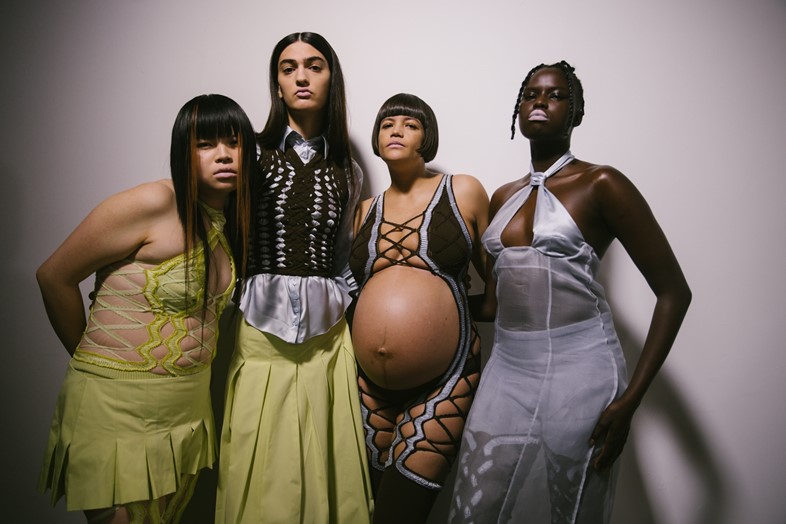
But Matell’s work goes beyond just casting – not only is she literally changing the face, and body, of fashion in London and beyond, she won’t shut up about it. In an industry in which even constructive criticism can be weaponised and used against you, Matell puts her money where her mouth is and consistently, vocally challenges the established ‘ideals’ we see time and time again on the catwalk. Hearteningly, she says that many brands are calling on her for advice on how to change, but just don’t know where to start.
Here, we have a frank conversation about our shared experiences within the industry, the constant push for change, and the brands doing great things – leading where others will hopefully end up following.
“The first major [show] I did, I asked my mom to walk it. We had a bunch of models with different bodies, which back then was almost unheard of. My mom was in this see-through dress and she looked fucking incredible” – Emma Matell
Hey Emma! So first of all, tell me how you got into casting?
Emma Matell: When I was 14, I was living in Copenhagen, and I wanted to be a photographer. I did an internship with a modelling agency, like a week-long school placement, and when I was doing that I was grabbing people off the street and bringing my friends in to take test pictures of them. At the time, there weren’t many agencies doing that sort of this – there were just a couple that were opening up street casting arms, which basically meant having a section for all the models who didn’t fit the regular board, whether because of height, or size, or whatever. I was only 14, but they ended up hiring me because I had access to 14 and 15-year-olds – in that way, I was the perfect scout – and I started to develop their street cast boards. Looking back now, it wasn’t mad inclusive, but for the time, which was ten years ago, it was pretty different.
I got headhunted by another agency when I finished school, so I worked for them for a bit. And then when I was 17 or 18, I decided I wanted to set up a street casting-specific agency in Copenhagen. I had no idea what I was doing, and it had never been a thing in Copenhagen – it was still the early days in London – but it was really needed in Denmark. So I was doing that, while working as a florist at the same time to support myself. It was a bit of a weird hobby kind of thing at that point. And then I moved to London.
How’s Copenhagen doing in terms of diversifying the runway? I feel like they were really leading the way with this for a while.
Emma Matell: I mean, there are some brands doing amazing things – labels like Ganni are trying to close the gap by making bigger clothes and casting bigger models in a non-tokenistic way. They’re really showing us what needs to be done. Copenhagen is a bit of a double-sided blade because a lot of the brands there are very commercial, so we’re seeing more inclusivity because I presume it boosts sales. But then there’s loads of labels that still champion that ‘Scandi girl’ thing, who are only spitting out thin blonde girls on the runway, and have been for many years, so there’s the toxic side to it too.
Tell me about the first show you cast.
Emma Matell: The first major one I did back in Copenhagen was for the graduate school, and I had no idea what I was doing – I was really just winging it. I asked my mom to walk it, and we had another mother who was a bit older. We had a bunch of models with different bodies, which back then was almost unheard of. My mum was in this see-through dress and she looked fucking incredible. She’s 54 years old! It was a real moment, and the feedback we got was insane.
You work mega closely with Sinéad O’Dwyer, whose catwalks are some of the most diverse going. Can you talk me through your process when it comes to casting?
Emma Matell: It’s been a real learning process, put it that way! There is no manual on how to cast a show like that. It’s really different to the standard way of doing things, because you’re working with such a variety of sizes. For the first season, we had a traditional casting approach, which meant there were a lot of people we wanted, but couldn’t get because the fit wasn’t right. It was quite frustrating! We figured out quickly that if you want it to work, you have to re-strategise the process when it comes to making the garments, but also how you do a show and the casting and everything else within your company really. We’re now in a process of pre-casting before the season starts, so the second time around we got the models we wanted and made them custom looks. It was an amazing achievement because it proved that it could be done.
What did you make of London when you first came here? For ages, it felt like we were really lagging behind in terms of casting larger models, casting differently-abled models, particularly as we are known for being scrappy and DIY and all about character in fashion. I always think about that 2009 Mark Fast show, when he sent a bunch of size ten and 12 models down the runway and I thought things were going to start changing. But then… nothing, for a good decade.
Emma Matell: The thing is, when I got here, it was still so much bigger than the tiny bubble I was coming from – it felt ten times more diverse. Even the streets, and the people you look at. I felt like there was a lot more space to push what I was about than there was in Copenhagen. But then I went to work with a big modelling agency, and I was confronted with the reality of the situation – I was like “Shit! We’re still not doing very well here either”. I think because there’s such an amazing focus on young designers here, who are doing what they can in terms of diversifying the catwalk, it seemed better than it was.
“I think with some of the big brands there is a deliberate mindset that’s still ingrained in that they do not want fashion to be accessible, because being accessible means it is no longer luxury and that accessibility is so tied to a certain body standard” – Emma Matell
It really does feel like there is a lot of pressure on young designers to make these changes and have more diverse model line-ups, when actually it’s the bigger brands that have the money and the infrastructure to be able to do it more easily. How do you feel about this?
Emma Matell: It’s awful, isn’t it? I think the bigger brands that actually have the capacity to make these changes make the deliberate choice not to. And so [these young designers] become the kind of hyped-up poster girls, but aren’t actually backed up by the commerciality or buyers in the same respect that other brands are. I think with the big brands there is a deliberate mindset that’s still ingrained in that they do not want fashion to be accessible, because being accessible means it is no longer luxury and that accessibility is so tied to a certain body standard. It would become less exclusive if it was available to more than one certain body type. So rather than changing the product, they’re still asking you to change your body.
And yet the idea of luxury has completely shifted – fashion is an entertainment industry now as much as it is one that clothes us. There has never been more people interested in fashion, willing to save up and drop money on luxury goods, and to diversify sizing and accessibility would surely bring in more money…
Emma Matell: And we all know that fashion loves money! [laughs] It feels so disjointed, because these huge conglomerates are driven by numbers and CEOs who want to rake in the cash. That’s a fact! But in order to gather the data in the first place, and get the numbers backed up, someone needs to take a chance, otherwise there won’t be any evidence for the money man. A bunch of big brands, for a while at least, were putting curve models on the runway, but then the things they wore there – do they actually even go into production? There’s still a lot of tokenism, and curve models being used for clout, when realistically a larger person couldn’t actually go into the store and buy anything from the collection, including that specific curve look.
It’s interesting how the audience responds to seeing more diverse bodies on the runway. Even editors who haven’t historically taken an interest in diversifying the runway come out of shows like Karoline Vitto’s and Ester Manas’s energised and love what they have seen. It feels like the audience is shifting faster than the brands are? Runways with just sample-sized models feel so dated now, I think for everyone.
Emma Matell: Totally. When it’s just a line-up of models of the same size, it feels overpowering to me. Obviously I have a big interest in clothes, but where I am coming from, if the casting isn’t great, it really takes away from the overall experience, you know? I can’t appreciate the clothes in the same way, it’s difficult to see beyond. There are so many incredible designers out there who could create amazing things for different bodies and they just don’t.
The brands you do work with… Do you go to them, or are they coming to you? I’m interested to know if there are any labels who do want to diversify their runways but just don’t know how. And then, if there are any that you have conversations with, who then decide it will take too much effort?
Emma Matell: What I find is that the garments always rule the casting. As you know, it’s always the stylist or the designer who has the last word on who will be in the campaign or in the show. When brands come to me, I basically try to present them with as many options as possible, I show them what they could do. And then, often they say they don’t have the time or the money. Sometimes, they want to change it for the next season. Ultimately, it comes down to what the designer wants, and what their vision is. But they really have to want it, because there is no playbook for this – it takes a lot of work.
“I would love to do the Gucci casting, because, historically, they have been so willing to experiment with their cast. I feel like Midland and Alessandro Michele literally changed the casting for them” – Emma Matell
A big conversation we often get into surrounds tokenism. I’m conflicted, because on one hand, it’s frustrating that brands stick one larger or differently abled model in their cast and call it a day, but on the other, any representation is better than none. How do you feel about it?
Emma Matell: The thing is, it is so hard to be satisfied with minimal effort when it deserves so much more attention than just that. There’s also this problem that there aren’t many curve supermodels. So a brand goes through all of them, maybe one a season, and thinks they have done their bit. There is a huge opportunity there for agencies to push their curve models’ careers and put forward alternatives, but I don’t know if they really are? Whenever I scout really interesting people, I show them in both editorial and high fashion spaces, but oftentimes they’re not being put on the radar, so there’s no entry for them. Who’s going to be the next Paloma [Elsesser] or Alva [Claire]?
Brands aren’t regressing, but there is not that much progress being made either. I mean, there was this one beautiful Valentino show, which was a couture show, and it had all these amazing mid-size and curve models, and they did it again the next season. But then nothing the last couple of years – and it’s couture, that stuff is not going on the racks in stores, so there is a real opportunity to show what the clothes look like on different bodies. It’s so strange!

When you are scouting these young models, they’re going into these quite hostile environments – even for people who are considered slim or able-bodied – and they have to deal with a lot of rejection. How do you support them? You must feel a lot of responsibility.
Emma Matell: Every time I street cast someone, I always put them into a project of my own first to set an example of how it should be. So then, if they are being cast by a different brand afterwards, they have an experience of how things should feel, what feels wrong, and what not to accept. I want to set a positive example in that way. Then obviously, I always make sure that they can reach out and ask questions. I let them know that if anything comes up, that they need help navigating, they can come to me. Sometimes, I even negotiate on behalf of my street casts, even though I’m not representing people or anything. And I really try to have as much capacity to keep in touch and follow up.
The thing about street casts is that usually, [they won’t get] more than a couple of jobs because of their looks. Unless you find someone who is really commercially viable. It’s weird, you know? They become this moment that feeds into this sensation – maybe they will do two or three more things and then the brand moves onto the next. It is really sad, but that is also the brutal lack of longevity across the industry.
Is there a brand you’d really like to work with?
Emma Matell: I would love to do the Gucci casting, because, historically, they have been so willing to experiment with their cast. I feel like Midland and Alessandro Michele literally changed the casting for them. I feel like the brand has so much history and such an archive, there are so many resources to build a universe. Gucci has the scale and the resources to show that it can work commercially and could set a really clear line. And I mean they did start introducing curve models to the line-up! It just needs to stay consistent.
Otherwise, I would fucking love to see an inclusive Prada or Saint Laurent collection. It would be so exciting if they just really went for it to show what an insanely skilled set of people they’re working with. What a flex it would be to deliver the best tailored collection of the season – which both are already doing – on a huge variety of bodies.
Let’s end on a positive note, because despite big changes needing to be made, I feel hopeful for the industry right now! Who do you think is doing great things?
Emma Matell: Oh, there are some really special brands out there. Collina Strada has had this really inclusive casting in terms of size and disability since the start of the brand essentially. It goes up and down each season, but it’s integral to who they are. In that way it feels really authentic, not forced. It’s consistent. Ester Metas was also really good this season.
